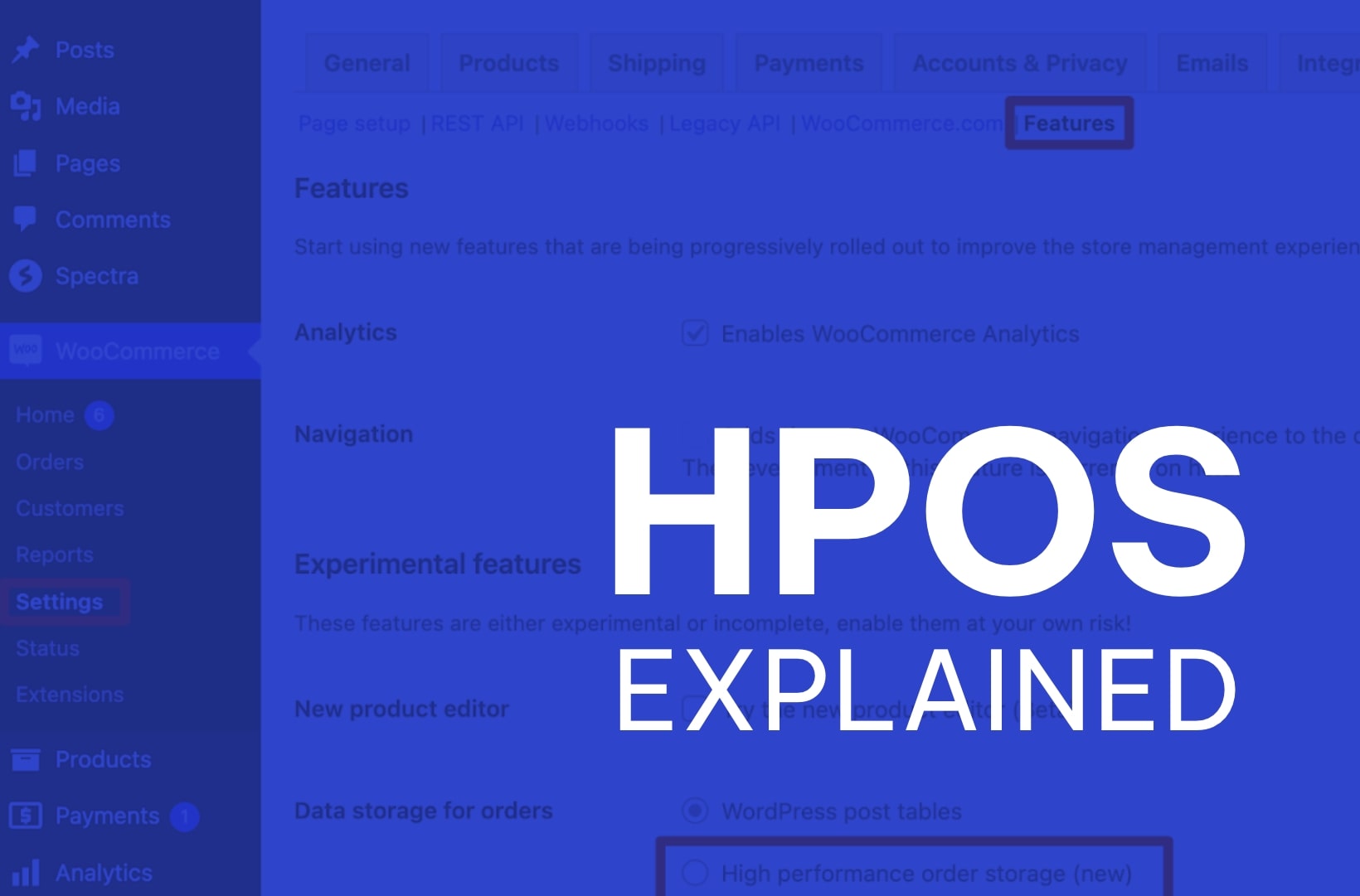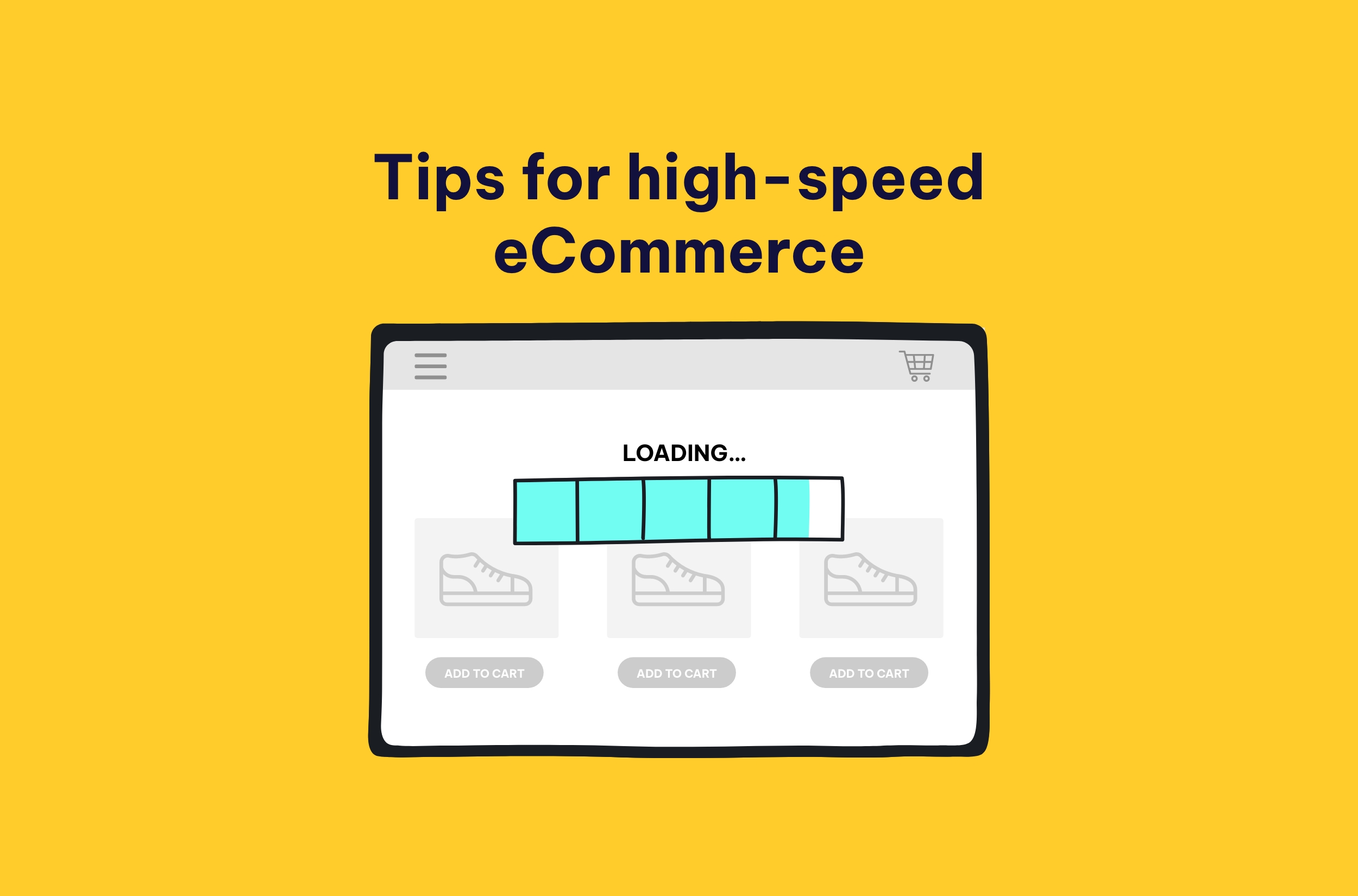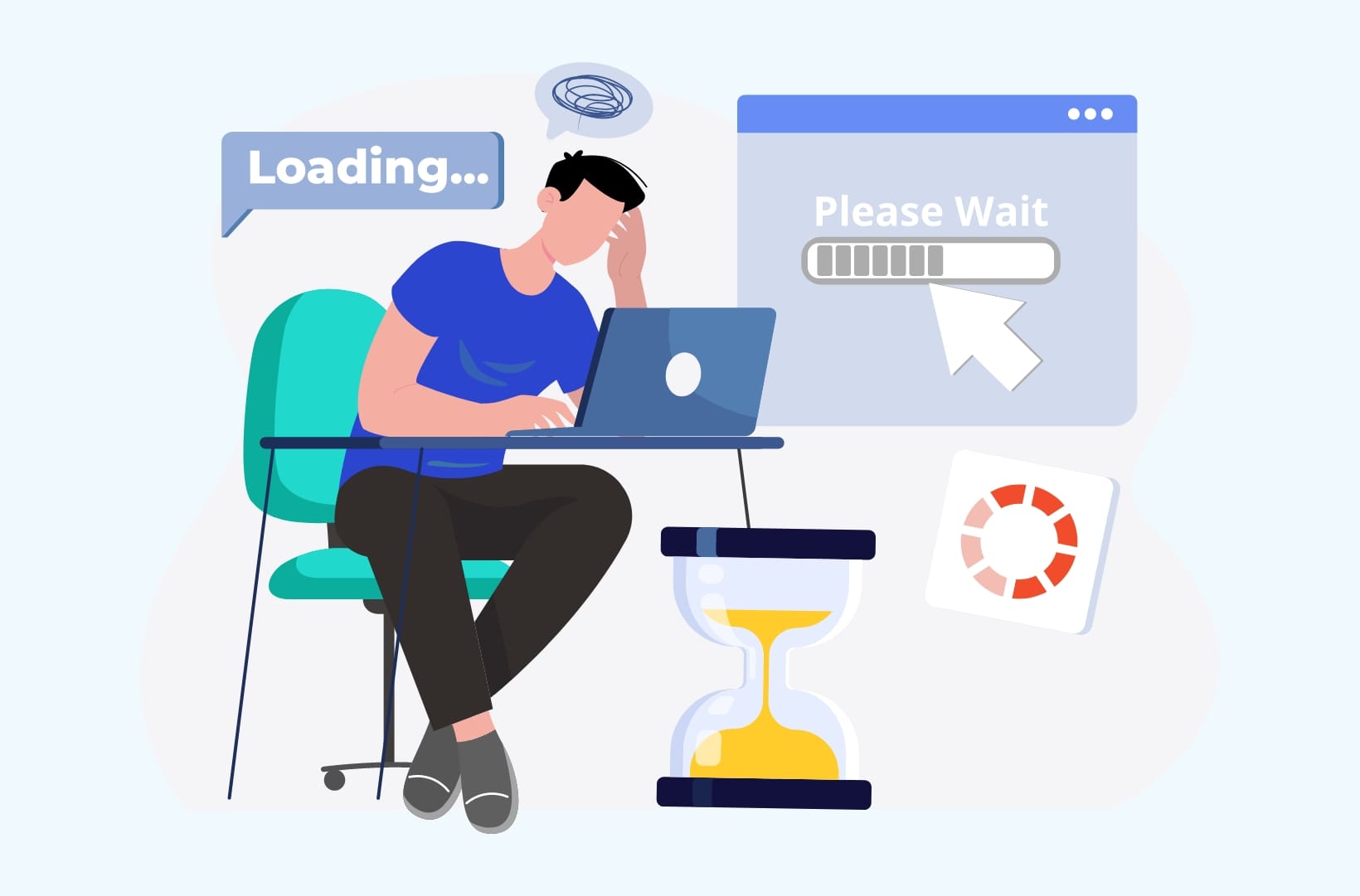Want to solve your WooCommerce performance issues? If you’ve ever found your WooCommerce store bogged down by a flood of orders, there’s a high chance you’ve faced a common problem: the need for optimized storage solutions that can handle the scale of your operations.
Enter the world of High-Performance Order Storage (HPOS).
This technological innovation is specifically designed to optimize and amplify the performance of WooCommerce stores, especially those bustling with a significant volume of transactions.
In this comprehensive guide, we’ll walk you through the role of WooCommerce HPOS. You’ll gain a clear understanding of its profound impact on eCommerce operations, unravel potential compatibility issues, and learn how it champions scalability.
Let’s embark on this journey to accelerate your WooCommerce store’s performance like never before!
Introduction to High-Performance Order Storage in WooCommerce
High-Performance Order Storage (HPOS), previously known as ‘Custom Order Tables’, is a revolutionary concept that presents a robust and comprehensible database framework, meticulously crafted to cater to WooCommerce requirements.
At its core, HPOS is designed to optimize how WooCommerce stores and manages order data, ensuring rapid data storage and retrieval.
HPOS employs the CRUD (Create, Read, Update, and Delete) model to efficiently store order information within custom tables. This approach is fine-tuned to enhance WooCommerce queries while maintaining minimal disruption to the store’s overall performance. It’s particularly crucial if your online shop is processing a large volume of transactions.
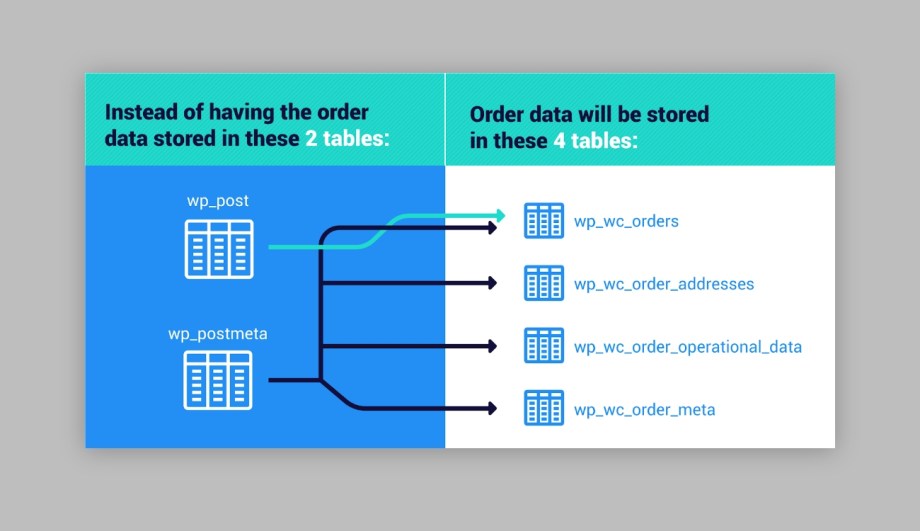
Previously, WooCommerce used wp_post and wp_postmeta table structures to store information related to products, coupons, orders, and more. The HPOS database schema adds the four new database tables mentioned below, to help improve reliability, scalability, and simplicity in order management:
As of August 2023, WooCommerce has announced that HPOS will be enabled by default on all storefronts. Here’s why this is such a big deal according to Kostas Seresiotis, Senior Product Engineer at Saucal:
Before HPOS, WooCommerce used the generic WordPress mechanisms to store order data, which while worked, was far from optimized and had apparent weaknesses especially on large sites.
Let’s look at how HPOS makes a difference to various stakeholders in the WooCommerce world:
eCommerce businesses
For businesses operating at a large scale with high transaction volumes, the efficiency with which you store and retrieve order data is not just a technical detail, it’s a critical component of your overall business strategy. It directly influences factors like customer experience and, consequently, sales.
A sluggish site can deter potential customers, leading to lost sales opportunities. HPOS addresses this by ensuring that order data is handled with maximal efficiency, thereby contributing to a smoother, swifter site experience for the end user.
Web developers
Developers collaborating with WooCommerce enterprise businesses often find themselves at the forefront of technical challenges. The demand for faster, more efficient sites has never been higher. A deep understanding of HPOS becomes indispensable for these professionals.
Implementing HPOS, knowing its intricacies, and leveraging its capabilities can be the difference between a site that merely functions and one that excels.
Furthermore, by harnessing HPOS, developers can effectively meet client expectations, ensuring that their crafted solutions not only match but exceed the demands of today’s eCommerce landscape.
Plugin developers
WooCommerce’s expansive ecosystem includes several plugins designed to extend and enhance its native functionalities. Developers in this space need to be acutely aware of HPOS and its intricacies.
Why? Because HPOS directly impacts how plugins interact with order data.
A plugin designed without HPOS considerations might face compatibility issues, affecting its efficiency and reliability. With a thorough knowledge of HPOS, plugin developers can ensure that their creations seamlessly fit into the broader WooCommerce framework.
While the advantages of HPOS are clear, it’s essential to address potential challenges that users might face.
- Compatibility issues with existing plugins are a known concern. The transition to HPOS could mean that some older plugins, not built with HPOS in mind, may not function optimally. It’s vital to be aware of this and plan for potential plugin updates or replacements.
- There’s a learning curve when it comes to implementing HPOS. However, with the wealth of resources available and a growing community of developers familiar with the system, those willing to invest the time will find that the benefits of HPOS far outweigh the initial challenges.
Understanding the impact of HPOS on WooCommerce operations
Navigating the intricacies of WooCommerce operations requires an acute understanding of its underlying structures and systems. Central to this is the role played by HPOS.
Its influence permeates through various facets of WooCommerce operations, bringing about profound shifts in how order processing, database performance, scalability, and data management are executed.
Let’s explore the transformative impact of HPOS on WooCommerce operations in greater detail, setting the stage for an unparalleled eCommerce experience.
Better reliability
With an ever-growing market and consumer demands, ensuring swift order processing becomes imperative for businesses aiming to maintain a competitive edge. This is where the integration of High-Performance Order Storage shines its brightest.
By harnessing HPOS, WooCommerce enhances its order processing speed substantially, through a combination of optimized database structures. As a result, tasks such as order creation, modification, and retrieval are accomplished with an efficiency previously unmatched.
So, what does this uptick in speed mean for the most important player (the customer) in your eCommerce store? An accelerated purchasing journey, of course!
Customers can seamlessly select products, add them to their cart, and complete their transactions without any irksome delays. This not only fosters a smoother user experience but also cements their trust in your platform.
In a world where every second counts, ensuring that a customer’s purchase pathway is devoid of hindrances can be a pivotal factor that encourages them to return for more, ultimately driving repeat business.
From the business standpoint, faster order processing isn’t just about satisfying current customers, it’s about accommodating potential ones too. In times of high traffic – say, during a sale or a festive season – your site’s capability to process orders swiftly ensures you’re always in sync with the surging demand.
No longer will a business have to dread the dreaded “server too busy” message or the possibility of losing sales due to lagging response times. With HPOS at the helm, your WooCommerce store is well-equipped to handle a surge in transactions, ensuring reliable revenue streams even during peak periods.
Increased simplicity
Instead of relying on convoluted and resource-intensive structures, HPOS’s new database schema is designed with eCommerce needs in mind and allows for swift and efficient access to data. This heightened efficiency translates into palpable operational benefits, primarily characterized by reduced data interaction time and a diminished need for computational resources.
The addition of these four new database tables leads to considerably faster data writing and reading, which results in faster page load times, ensuring users can navigate through product pages, checkout processes, and account details with a fluidity that enhances their overall shopping journey.
For businesses, this simplicity in data management is more than just a technical upgrade; it’s a strategic advantage.
With quicker access to product details, transactional data, or customer information, businesses can make informed decisions more promptly, ensuring they’re always in step with market dynamics and customer needs.
To ensure your WooCommerce store operates at peak performance, it’s vital to understand the ins and outs of how data is synchronized and communicated between systems. This is where WooCommerce webhooks come into play, providing real-time updates that keep your store’s operations running smoothly and efficiently. Integrating webhooks effectively can be the key to unlocking even greater scalability and automation in your eCommerce endeavors.
Enhanced scalability
Businesses today continuously aim for growth, whether it’s broadening their product offerings, expanding into new markets, or increasing their customer base.
HPOS, with its optimized database structure, enhances WooCommerce’s ability to manage a more substantial data volume. It equips the platform to handle a burgeoning customer base or an expanding product catalog without faltering.
This capacity to scale is not just about numbers; it’s about ensuring consistent performance regardless of the data load. With HPOS, businesses can be confident that as they grow and evolve, their WooCommerce system remains steadfast, efficient, and responsive.
Compatibility and integrations
As important as High-Performance Order Storage is in augmenting the performance of WooCommerce stores, it’s essential to consider the broader ecosystem within which it operates, primarily, its compatibility with existing plugins.
Many of the existing plugins have been tailored to interact with the traditional WooCommerce data storage schema. Introducing HPOS, with its optimized and distinct architecture, can, in some instances, obstruct certain plugins from not functioning as intended or even slowing down your website.
So, what’s the recourse? First and foremost, site owners need to be proactive. It’s prudent to either seek alternative plugins that are inherently compatible with HPOS or engage with a developer to ensure existing plugins are harmonized with the new data storage mechanism.
The importance of compatibility can’t be stressed enough, not just for maintaining the site’s existing functionalities but also for leveraging the full potential of HPOS.
For plugin developers, the onus is clear: as WooCommerce evolves, it’s imperative that plugins do too. Ensuring that plugins are updated to align with HPOS becomes paramount, both to serve existing customers and to stay relevant in an evolving marketplace.
But for WooCommerce store owners, navigating this intricate landscape of compatibility and integration can seem daunting. This is where Saucal steps in.
With its managed WooCommerce services, Saucal addresses compatibility concerns head-on. Beyond the provision of monthly updates for plugins, themes, and core functionalities, the plan encompasses automated UX testing, store uptime monitoring, and stringent store security and access monitoring.
Perhaps the most invaluable offering from Saucal lies in its dedicated team of WooCommerce maestros. Comprising product engineers and quality assurance engineers, this team is poised to evaluate, identify, and resolve potential conflicts between HPOS and existing plugins. Their expertise ensures that the integration of HPOS into your WooCommerce store is not just smooth but also enhances the site’s overall functionality and performance.
How do I enable HPOS?
The transformational benefits of HPOS for WooCommerce have been clearly outlined, but the main question for many WooCommerce store owners remains: How do I seamlessly integrate and enable this feature?
Here’s a systematic guide to ensure a smooth transition to HPOS, allowing you to harness its capabilities to the fullest:
1. Activate HPOS
Navigate to WooCommerce > Settings > Advanced > Features. Within this section, you will find the option to enable the High-Performance Order Storage feature. Make sure to check the ‘Keep the posts and orders tables’ in sync box to sync the order data between the posts/postmeta and new order tables of HPOS.
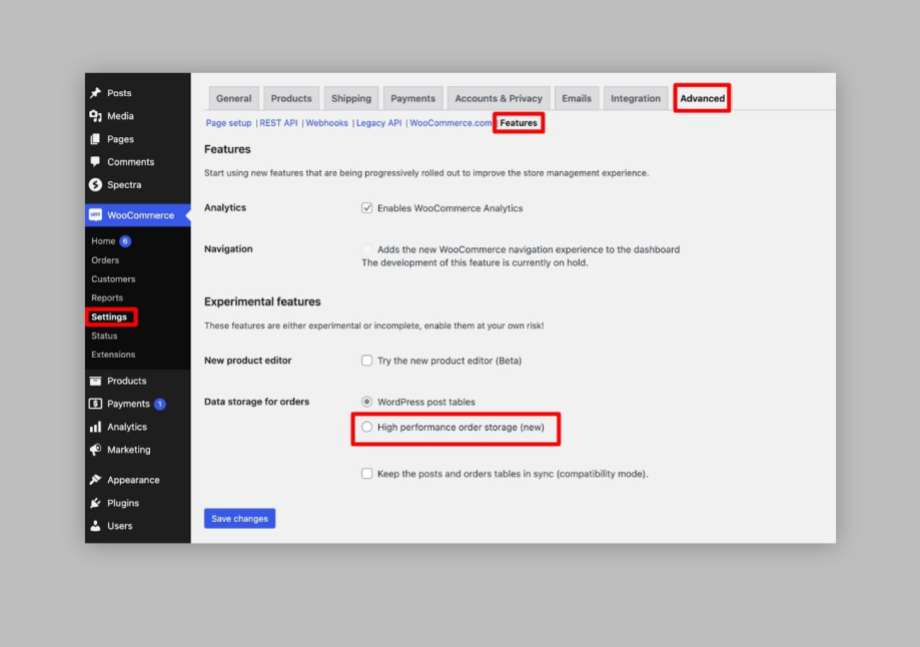
2. Access custom data stores
Once HPOS is enabled, a new section titled ‘Custom Data Stores’ will become available. You can access this by heading to WooCommerce > Settings > Advanced.
For those who wish to ensure data consistency between the custom order tables and post tables, there’s an option to keep them synchronized. It’s imperative to understand that once this synchronization is initiated, toggling between tables will be restricted until the syncing process is complete.
3. Verify plugin compatibility
With HPOS activated, it’s crucial to ascertain the compatibility of your existing plugins. The official HPOS documentation mentions that if you use a plugin that is not compatible with HPOS, then the HPOS option will be disabled. Should you encounter any plugins not aligning well with HPOS, it’s advised to promptly notify their developers.
The future of WooCommerce with High-Performance Order Storage
WooCommerce is undergoing rapid and dynamic shifts, shaped in no small part by advancements in technology and a relentless drive to optimize user experience
As of August 2023, HPOS has become an integral feature for every new WooCommerce store that comes into existence. With WooCommerce 8.0, data synchronization with posts/postmeta tables will be disabled.
The immediate impact? A user experience that’s more streamlined, more robust, and ready to meet the contemporary demands of discerning shoppers.
For existing WooCommerce stores, while the transition to HPOS remains optional for now, this will not be the status quo for long. A mandatory shift to HPOS looms on the horizon.
Even if change often brings challenges, the end goal is unequivocal: a WooCommerce ecosystem that’s faster, more resilient, and tailored for the future.
In this transformative phase, the role of experts cannot be understated.
Saucal, with its designation as a certified WooExpert, stands at the forefront of this evolution. Their intimate understanding of WooCommerce’s core code positions them uniquely to integrate and optimize HPOS, ensuring businesses not only navigate these shifts competently but also stay ahead of emerging trends.
Get started with HPOS
Given the undeniable benefits and the future trajectory of WooCommerce, the message is clear – it’s time to embrace HPOS. And for those seeking a seamless transition or aiming to maximize the potential of this feature, Saucal stands ready as your trusted partner.
With a rich tapestry of experience and expertise, Saucal is uniquely positioned to guide and assist businesses in harnessing the full might of HPOS.
The future of WooCommerce, shaped by innovations like HPOS, beckons with promises of unrivaled performance and user experience. Don’t just be a spectator – be a part of this transformation.
Intrigued by the prospects of HPOS and looking to chart a seamless path forward? Get in touch with Saucal today and embark on a journey to redefine your WooCommerce operations!
